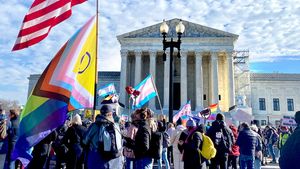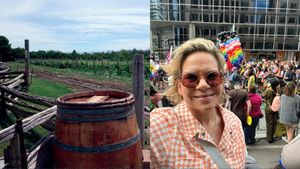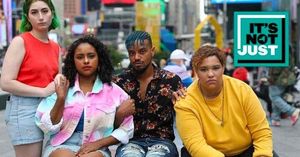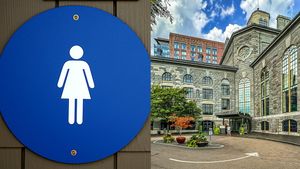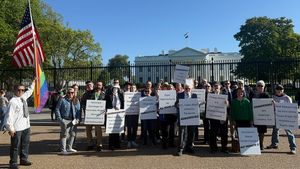According to the CDC, people on medication who are virally suppressed and have adequate immune responses are not at a higher risk of severe illness and death from COVID-19. However, factors common in some people living with HIV, in particular co-morbidities, do greatly increase the risk of poorer outcomes.
Despite COVID-19 creating unparalleled changes in how we live, there’s been little discussion on how the Ryan White CARE Act, PEPFAR, and the Global Fund for AIDS, TB and Malaria will address safe practices, particularly at AIDS service organizations, and how these measures will be evaluated and where the funding for these provisions will come from. As restrictions continue to be lifted, how will people living with HIV at higher risk of illness safely receive services and medical care until there is a preventative vaccine?
Estimations suggest that it will be the spring of 2021 before a vaccine could be available to the general public. Although vaccine studies are moving forward at an unprecedented rate, clinical trials take time and it may take numerous attempts to discover a vaccine candidate that is safe and effective. After an effective vaccine is found, it will then take additional time to produce and distribute the vaccine globally. In the meantime, a significant risk will exist for some people living with HIV in accessing essential services.
Of the 1.1 million people in the U.S. currently living with HIV, only 53 percent are virally suppressed. In 2018, 17,032 individuals in the U.S. received an AIDS diagnosis. Initial observations indicate those with CD4 counts below 50 are at a higher risk for severe COVID-19. Viral suppression is most often needed to prevent further deterioration of the immune system and for the immune system to once again become effective at fighting off pathogens such as viruses and bacteria. However, not all virally suppressed individuals see a complete rebound of their immune system. Some people, particularly those who began antiretroviral therapy (ARVs) when their CD4 count was below 200, experience a decreased improvement in CD4s which may not return to normal levels.
Many people living with HIV experience co-morbidities which also significantly increase their risk of severe illness with COVID-19. Heart disease, diabetes, liver and kidney disease, and certain cancers are commonly seen in people living with HIV, particularly as they age. A recent South African study found the death rate of people co-infected with HIV and COVID-19 was 2.75-fold higher than those without HIV of equal age. Investigators determined that most of the individuals in this study had additional conditions including diabetes, and viral suppression or non-suppression was not a determining factor. In total, there is a large number of people living with HIV for who safeguards should be put in place to reduce the likelihood of COVID-19 infection where possible.
Many people living with HIV receive vital services such as case management, food pantry, benefits counseling, housing assistance, treatment, and substance abuse referrals from AIDS service organizations and community-based organizations. Currently many organizations are temporarily closed or conducting onsite screening for symptoms of COVID-19 as well as offering teleconference services to their clients for certain programs. However, some services can only be accessed in person. As states reopen, AIDS service organizations, harm reduction centers, mental health and substance abuse facilities will need to make long-term adjustments in the way they provide basic services in order to protect their clients and staff.
Social distancing and symptom screening have become normalized practices with the restructuring of offices, waiting rooms, conference rooms, and other closed environments that people frequent simultaneously. Teleconferencing and phone appointments are now common in clinical practice. Hours are also extended or decreased to limit the number of individuals who occupy a given space at the same time. Another vital preventative method against COVID infection is environmental sterilization (remediation).
How will AIDS service organizations, already running on shoestring budgets, absorb the cost of the remediation needed to prevent COVID-19 and why are these sterilization procedures not being discussed as an overall strategy? Studies show that COVID-19 can remain infectious on different surfaces in different environmental conditions. The New England Journal of Medicine reported that studies showed the virus was detectable on copper for up to four hours, on cardboard for up to 24 hours, and on plastic and steel for up to 72 hours. Over these periods, the virus’s genetic code begins to deteriorate, but we’re unsure how quickly this occurs and at what point it becomes non-infectious.
“Well thought-out plans for protecting vulnerable populations need to be proposed and carried out through state and federal recommendations and mandates,” stated Dr. Roscoe Moore, former Assistant Surgeon General and Board Member of the Global Virus Network of The Institute of Human Virology.
“Federal, state, and municipal governments are implementing strategies, albeit slower than expected, to protect the elderly, immune-compromised, and people with underlining conditions such as those we see in a growing percentage of people living with HIV and AIDS from COVID-19 acquisition. Proven social distancing measures in combination with additional support for those at risk and effective remediation of support service centers including AIDS service organizations, will help keep new infections down and protect those at highest risk.”
Regular cleaning of places people living with HIV frequent will no longer be sufficient in protecting those most vulnerable to COVID-19. These service providers will need to adapt new procedures that, through remediation procedures, will lessen the possibility of people becoming infected. Employing effective remediation of surfaces exposed to COVID-19 should be a priority along with other prevention methods.
One currently available method uses hypochlorous acid, which has been proven to be effective when dispersed in a electrostatic spray that completely covers any area being remediated for COVID-19. A second application of an antimicrobial being studied by independent labs, known commercially as SHIELD, is then disbursed, providing a molecular barrier to all surfaces from new containments for 90 days. The ionized microbicide clings to surfaces, which destroy viruses on contact. This method, performed by Germinator Mobile Sanitizing and Disinfection, should be evaluated for use at AIDS service organizations and other public spaces frequented by at higher risk individuals.
Another method was shown in recent studies by The Global Virus Network, a coalition comprised of the world’s preeminent human and animal virologists in 32 countries. GVN announced in early June that two of its partners, the Peter Doherty Institute for Infection and Immunity in Australia, and the Rega Medical Research Institute of KU Leuven in Belgium, demonstrated that a quaternary ammonium sulfide biocide compound called BIOPROTECT inactivates SARS-CoV-2 (the coronavirus that causes COVID-19) on surfaces, providing continuous residual viricidal activity for at least 46 days. The tests conducted were designed to conform with the U.S. Environmental Protection Agency and equivalent standards of regulatory agencies in Europe and Australia.
“The results of the tests conducted by the Doherty and the Rega Institutes demonstrate that BIOPROTECT eradicates SARS-CoV-2 on surfaces and provides continuous residual antimicrobial protection for an extended period of time,” said Dr. Christain Bréchot, president of GVN. “Effective antimicrobials will be extremely important in containing the COVID-19 pandemic, given the time it will take to implement mass vaccination and fully develop novel therapies. This represents a significant breakthrough in inhibiting the spread of COVID-19 by preventing surfaces from being contaminated by the virus.”
Remediation is in its initial stages of development for reducing new COVID-19 infections. Yet, there’s still no guidance on evaluating and employing remediation methods at AIDS service organizations by HIV planning councils around the country or by leading AIDS advocacy organizations like the International AIDS Society, AIDS United, or the National Minority AIDS Council, and no current funding mechanism exists for remediating the predictable risk of COVID-19 exposure at these places through Ryan White CARE Act funding. Evaluating this important method of protecting those at greater risk should be a priority.
As we prepare for COVID- 19 sticking around for a while, it’s critical to ensure people living with HIV are not lost to another epidemic.
Jeannie Wraight is a health writer and frequent contributor to Plus. Follow her on Twitter @JeaWra.





































